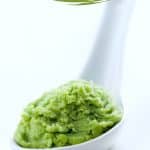Wasabi adds a bold, spicy kick to sushi and many Japanese dishes, but is it safe for a gluten-free diet? The answer depends on whether you’re eating real wasabi or the more common imitation version. Here’s what you need to know to enjoy wasabi safely.
This post may contain affiliate links. Please read our Disclosure Policy.

Quick Answer:
Real wasabi is gluten-free, but most wasabi served in restaurants is fake and may contain gluten. Authentic wasabi, made from the wasabi root, is safe for those with celiac disease or gluten sensitivity. However, the wasabi paste commonly used in North America is usually a blend of horseradish, mustard, food coloring, and sometimes wheat starch or flour.
Always check ingredient labels or ask your server if you’re eating out.
What Is Wasabi?
Wasabi (sometimes called Japanese horseradish) is a spicy green condiment used in sushi, sashimi, and sauces. It comes from a root native to Japan and is known for its sharp, nose-tingling heat.
Wasabi gets its spicy kick from volatile compounds that are released when it is cut or grated. Since these compounds are volatile, the spicy, rich flavors diminish if left exposed to air.
When freshly grated, real wasabi forms a pale green paste with a slightly gritty texture and herb-like flavor. But because real wasabi is expensive and difficult to grow, most restaurants use a cheaper imitation version made with:
If you love sushi, don’t forget to check this gluten-free sushi guide to see if sushi is gluten free, and get my top tips to eat at gluten-free sushi restaurants. Many Japanese restaurants offer gluten-free soy sauce, tamari, or coconut aminos for their gluten-free guests.
Real Wasabi vs Fake Wasabi
- Real wasabi has a strong smell that gives you a kick in the nostrils when you consume it, resulting in a mild burn that is not harsh but can make you twitch your nose.
- Real wasabi is pale green, and its taste is more herb-like. Fake wasabi has a sharper or brighter green color due to the extra coloring that is added during processing.
- Real wasabi is grated directly from the plant; you can feel the grit when you touch or put it in your mouth.
- Fake wasabi is mildly processed; thus, its paste is smoother, giving it a consistency similar to that of toothpaste.
- Most restaurants, grocery store packets, and pre-mixed pastes use fake wasabi. While some are gluten-free, others contain wheat starch or wheat flour as a thickener.
Email This Recipe To Me!
Can You Buy Gluten-Free Wasabi?
Yes! Here are a few gluten-free wasabi options you can look for online or at Asian markets:
- Eden Wasabi Powder – Mix with water. It is labeled gluten-free.
- S&B Wasabi – It is sold in a tube and is labeled gluten-free.
- Sushi Sonic – Sold at Sprout Market, it is powdered and gluten-free.
Additionally, read “Is Udon Gluten-Free” to learn which brands are gluten-free.
⚠️ Always double-check product labels and manufacturing practices, since brands can change ingredients or processing methods without warning.

